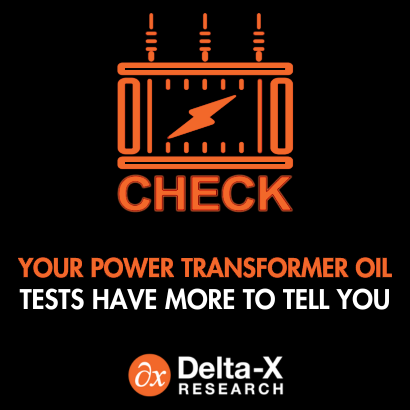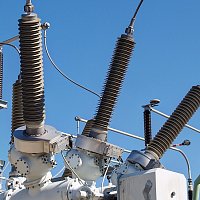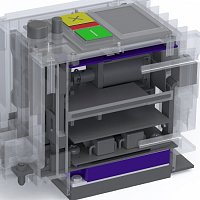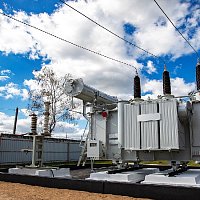
Image for illustrative purposes
-
The electrical power system of a country generally consists of generators, high voltage transmission lines that stretch hundreds of miles followed by distribution lines that span millions of miles in order to serve a range of consumers.
-
Existing grid infrastructure employs non-ecofriendly equipment that leads to GHG emissions followed by over voltage, phase imbalance and harmonic pollution issues.
-
Modernization of the grid will utilize the solid-state technologies that in turn are expected to not only streamline the power system operations, but also to assist countries in reducing their carbon footprint.
The electrical power system of a country generally consists of generators, high voltage transmission lines that stretch hundreds of miles, followed by distribution lines that span millions of miles in order to serve a range of consumers. Along with generators, transmission and distribution lines electrical power system comprises of substations as well, and they act as a critical interconnection among generation, transmission, distribution, and consumers.
In a conventional grid electricity is supplied with the help of conventional power plants, for instance thermal, gas and diesel generators, are not only a costly option at times, but negatively impact the environment as well. However, in recent years we have observed a substantial increase in the deployment of renewables in the generation mix of countries along with the installation of battery energy storage projects and EV charging infrastructure that calls for the grid infrastructure to have the capability of bidirectional flow of electricity and information. This sort of capability that allows bidirectional flow of power and information is absent in the conventional grids, hence modernization and upgradation of the grid is imperative.
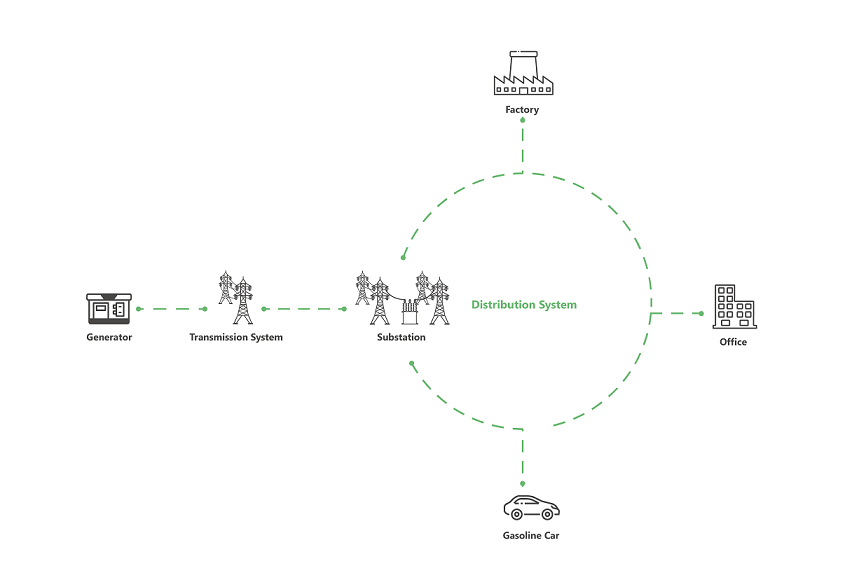
Figure 1: Uni directional power flow in a conventional grid.
Source: PTR Inc.
Solid State Technology to Rescue
As the countries are moving away from conventional generation sources that negatively impact the environment to renewable generation, the need for significant advancements in the substation technologies has increased. Most of these requirements can be met with the solid-state technology, especially after the recent advancements in the technology, that in turn positively impacts the overall reliability and stability of the power grid.
Solid State Power (SSP) Converters
The emergence of solid-state converters have radically altered the landscape of power industry in recent years with their ability to provide dynamic real and reactive power control especially with integrated energy storage in place followed by facilitation of new grid networks, energy dispatch and black start capability. Furthermore, SSP converters have the capability to control the voltage, phase, frequency while allowing bidirectional flow of power.
These converters are efficient as they balance the use of AC and DC topologies which in turn reduces overall system losses. On the other hand, functional control, communication, protection, regulation along with other features that are needed to maintain the reliability and security of future grid are provided by SSP converters. It is noteworthy that the modular and scalable nature of SSP converters enables them to be used to carry out gradual upgradation of substations whenever required. For instance, if an equipment has failed or has become outdated in a substation, it can be replaced with a SSP converter which can later be linked with another SSP converter in the later stages..
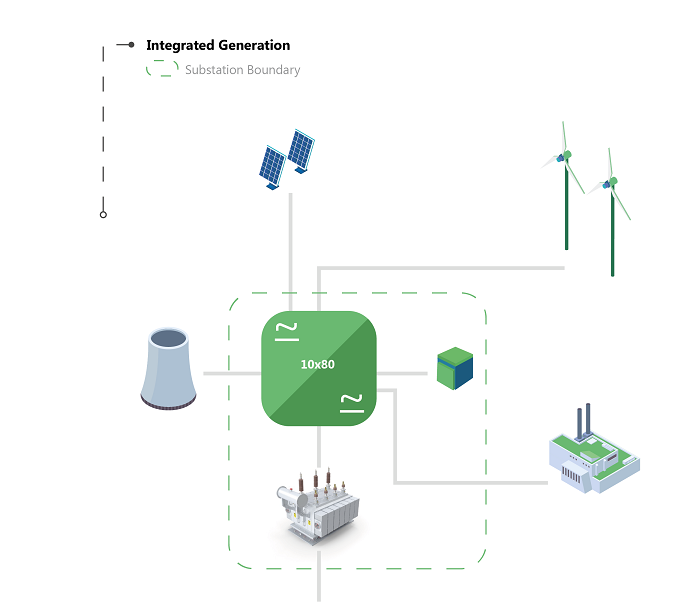
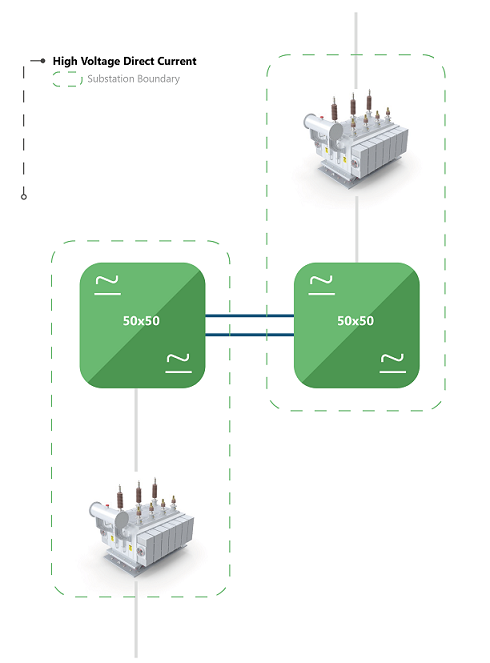
Figure 2: Solid state converter applications within substations.
Source: PTR Inc.
Solid State Transformers (SST)
Solid-state transformers, which provide a superior alternative to traditional transformer technology, are expected to form the backbone of upcoming smart grid and micro grid systems, especially multi microgrid systems. These transformers include power electronics circuitry that operates at high frequency, which in turn provides high controllability and bidirectional power flow. Although, high switching frequency leads to harmonics but it can be eliminated through filters that is usually a part of the same power electronics circuitry.
Additionally, SSTs provide a wide range of grid services for instance reactive power compensation, power quality improvement, current limiting, voltage regulation and power factor correction. It is significant to note that while regulating voltage or carrying out reactive power compensation , solid state transformers do not use tap changers, which leads to a reduction in the maintenance costs of the transformers.
In the last few years, we have observed that the average cost of battery energy storage has reduced which has resulted in batteries being deployed and integrated with the grid for frequency regulation and back up with the help of SSTs. SSTs also act as power electronic interface between MV AC, and LV AC system as shown in the figure below.
Figure 3: Application of solid-state technology in the distribution network.
Source: PTR Inc.
Furthermore, SSTs have the capability to isolate faults in a manner that upstream network faults do not transfer to downstream network, in turn allowing continuity of services to customers.
Solid State Circuit Breaker
In a solid-state circuit breaker, traditional moving parts of an electromechanical CB are replaced with the latest semiconductor technology that has the capacity to not only control the power flow, but also to interrupt and clear the fault in a few microseconds. A conventional CB, on the other hand, takes a few milli seconds to clear the fault. Downtime in case of an internal fault significantly impacts the energy storage systems and related electric grid services (for instance frequency regulation and grid backup). Solid state circuit breakers have the capability to isolate the faulty zone, reduce the arcing probability and let through energy by multiple orders of magnitude.
Advanced power distribution technologies and architectures, for instance DC microgrids, require an improved interruption rate (faster switching frequency), which has also pushed for research and development in the solid-state circuit breaker technology.
The ABB claims that their concept of solid-state circuit breakers will define the future of energy especially when it comes to electric transportation and battery energy storage solutions. In marine vessels, solid circuit breakers will reduce the downtime, as they have the capability to disconnect the faulty zone while keeping the rest of system in service.
On the other hand, they have also claimed that their CBs will have the capacity to prevent all the rack fuses from blowing up, which leads to a shutdown of the entire system in case of a fault.
Hinderance in Adoption of New Technology
Despite the advantages of solid-state technology, there is still a number of bottlenecks in the way of widespread adoption that needs to be catered, especially the challenges linked with the integration and impact on power system operations, maintenance, and existing practices. For the technology to be adopted widely the improved functionality of the solid-state technology is required to outweigh the costs for each potential application, but this would require significant investment and policy incentives from the regulatory bodies.
In case of solid-state circuit breakers, it is observed that the interruption speed is high, but the on-state losses are also on the higher side as compared to conventional circuit breakers. However, the emergence of hybrid circuit breakers that employ a combination of classical electromechanical CB technology and semiconductor switches has resolved the problem.
Furthermore, ratings of the solid-state equipment commercially available also plays a significant role in the technology adoption. If a like-for-like in terms of rating is not available in the market, utilities are not expected to consider that alternative.
For the technology to be adopted widely the improved functionality of the solid-state technology is required to outweigh the costs for each potential application, but this would require significant investment and policy incentives from the regulatory bodies.
Looking Ahead
In recent years, especially after the historic Paris Agreement in 2015, countries (largely advanced economies) across the globe are aggressively pursuing the deployment of renewables followed by the adoption of electric vehicles to electrify the transportation sector. Furthermore, we have also observed that the electrical infrastructure has become more vulnerable to not only physical attacks, but to cyber threats as well over the years. This consolidates the case for expansion, as well as modernization of the electricity grid infrastructure.
We strongly believe that modernization of the grid will greatly depend on the solid-state technologies that in turn are expected to not only streamline the power system operations, but also will assist countries in reducing their carbon footprint. However, costs associated with the deployment of solid-state technology will continue to play a significant role in the decision-making process of utilities and TSOs especially of developing economies with limited resources. Furthermore, investments will also be required in the research and development of solid-state technology that ensures the availability of a like-for-like alternative in terms of ratings of the equipment.






